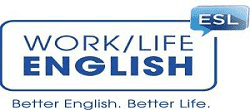
How do most adults learn languages? Here are five very general ways, adapted from Matador:
1) Translation Procedures, used centuries ago for classical languages like Greek or Latin or scientific ones like German, by scholars for academic or research purposes. Might updates work well for training translators, perhaps including programmers of translation software? With audio, could these deductive activities—in which language is first presented and then analyzed and reproduced—help oral interpreters, too?
2) Vocabulary-Based Approaches, the bases of children’s or ESL picture dictionaries and illustrated lexicons for specialized fields. Some language-learning software uses these methods. They rely on repetitive “See It, Say It” techniques that associate words with pictures, appealing to visual learners or those that want language for short-term goals. They may mislead people that want to put words together in communicative or articulate discourse, however.
3) Grammar-Based Systems, common in “Teach-Yourself” materials and older textbooks, favored by linguists and cognitive learners that want to understand “the scheme of things” before interacting casually. Whether labeled descriptive, structural, generative, transformational, audio-lingual, or another “kind of grammar,” the essence of the approach is its well-conceived sets of rules and patterns, or syntax. It enables thoughtful adults to analyze, diagram, organize, and “complete the puzzle” in ways that build confidence and ability because it makes sense.
4) Communicative “Best-Practices,” adopted by modern language schools, master teachers, and materials developers. This eclectic “Theory-Free Methodology” has evolved from the correlation of oral and written language skills (listening/speaking, reading/writing) with instruction in structural patterns (grammar) and vocabulary. It can include elements of the above approaches—as well as audio-lingual behaviorism, direct or natural methods, notional/functional frameworks, content lessons, physical response, task-based interaction, and new or combined techniques, games, and activities. Because it offers so much, It’s probably the most pragmatic, flexible, engaging, motivating, and effective way to teach and learn language.
5) The Immersion Method, the least systematic and scariest, consisting of being thrown into a new language environment. Learners are left to “sink or swim.” The “method” itself offers little instruction, advice, direction, or assistance. It may work best for independent self-learners, who can use other tools to make input comprehensible and to get whatever help or resources they need on their own.

So what’s the best way for you to learn English? Of course, your individual choices depend on your purposes for improving your language abilities. Do you need just enough language to get by temporarily—for travel, negotiation, an interview, a talk, or the like? If so, you might prefer to use computerized translation or a bilingual (picture) dictionary to fulfill your immediate goals.
Are you training for a position in a particular field—like dental assisting, science, construction, mechanics, or finance? Then printed manuals, vocational English texts, visual software, and seasoned colleagues may be your greatest resources.
Want Your Own Special Way? Then experiment with elements and features of as many methods and means as you can manage. Utilize or expand some. Adapt or adjust others. Discard a few, but be ready to go back to them if you need to. Custom-design a self-study program for your own needs, situations, and interests. Then keep applying even better ideas to changing conditions, requirements, abilities, feelings, and moods. Stay aware of your always evolving process and progress.
Sound Like Too Much Work Before Even Getting Started? Instead, you can simply adopt someone else’s system, perhaps a free method like those offered at Matador or FluentU. Whether these fit into the 5 styles listed above or are an eclectic mix of their features and more, the only way to find out what’s best for you is to try out various options. You can do so either “strictly as directed” or “in your own way.”
Commercial language-learning programs are another alternative. Current ideas, tips, and tricks are offered at sites like Langorts and other locations.
But What If You’re Particular? Are you an analytical thinker that wants to carefully determine “the absolute best” course of action for yourself before investing time, energy, or money? You could first scrutinize your own personality, review your past successes and failures, and revisit the concept of learning styles, which you may already be aware of. Or you can look up these psychological topics online to find charts and posters like this one. Then you can match your own inclinations to suggestions that conform to your personal history and type. Finally, you can choose the best way to learn.
Or What If You're Adventurous? Once you do determine what paths seem most “comfortable” for you, it might well be more beneficial to try out those ways that are their opposite—or that are very or just a little different from what you’re already familiar with. Take a chance. It just might work for you!

In the teaching and learning of English, we at Work/Life English + Authors & Editors have been aware of this truth forever. Check out our blog page for more info. If you have specific questions we can address through the Ask Elaine blog series, connect with us via email or social - and then have a good time learning by doing.
If you have any questions about phonics, please contact us on social media, or email your comments to our Subject Matter Expert: elaine@2learn-English.com
Blogs:
- “So Many Ways to Learn English: How to Decide What's Best for You”
- “Ask Elaine: ‘Now That I Really Want to Learn Language, How Can I Do It?’"
Related Work/Life English Products:
Free Work/Life English Samples:
- Phonics & Spelling Bingo Game
- Information for Users at Beginners’ Before Speaking with Pronunciation Principles
Related External Resources:
About Work/Life English
Work/Life English is an experienced provider of fun, effective English language improvement content that advances the lives of native English and English as a Second Language (ESL) speakers by improving their English competence, comprehension, and communication skills. For more information, visit: www.worklifeenglish.com.

